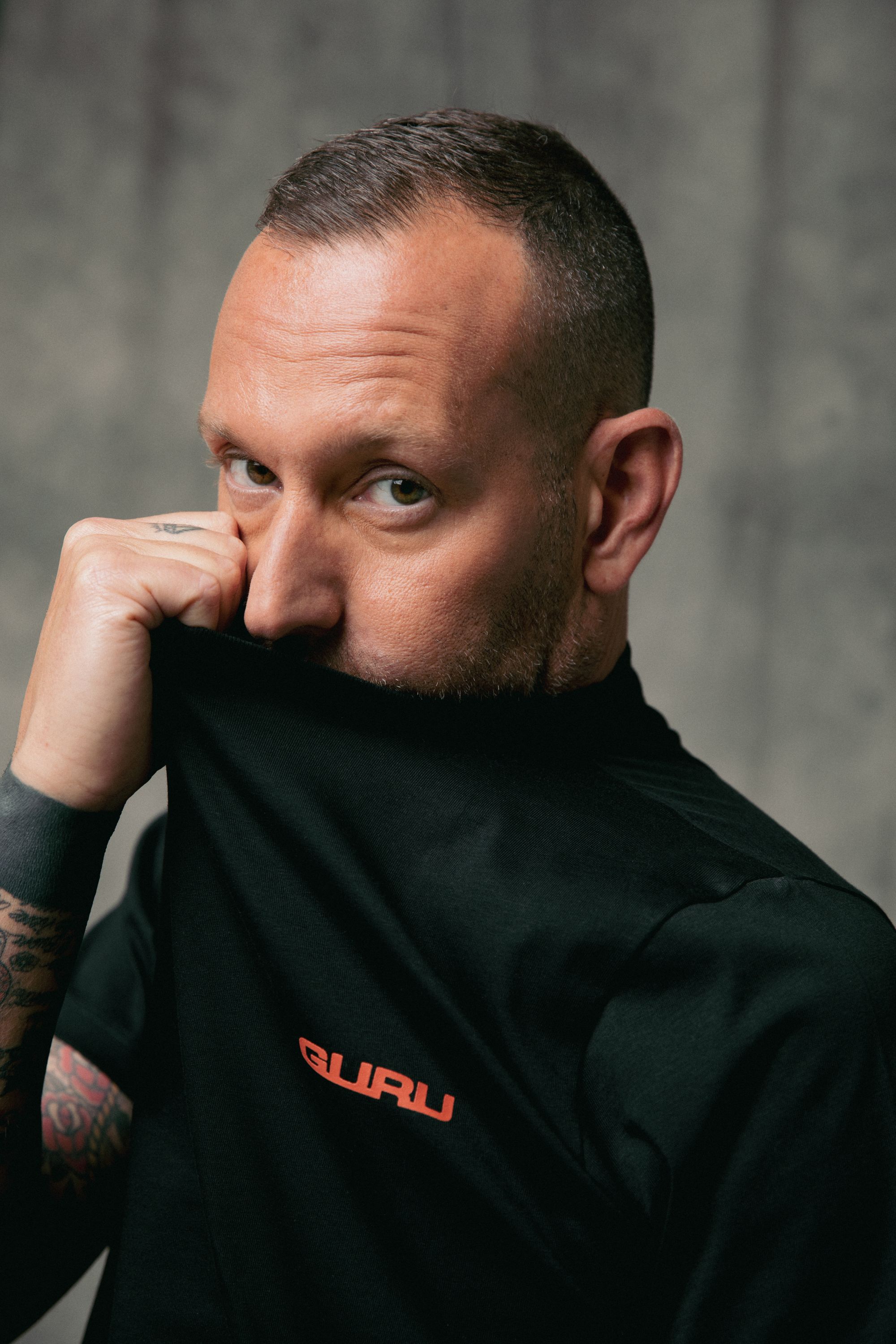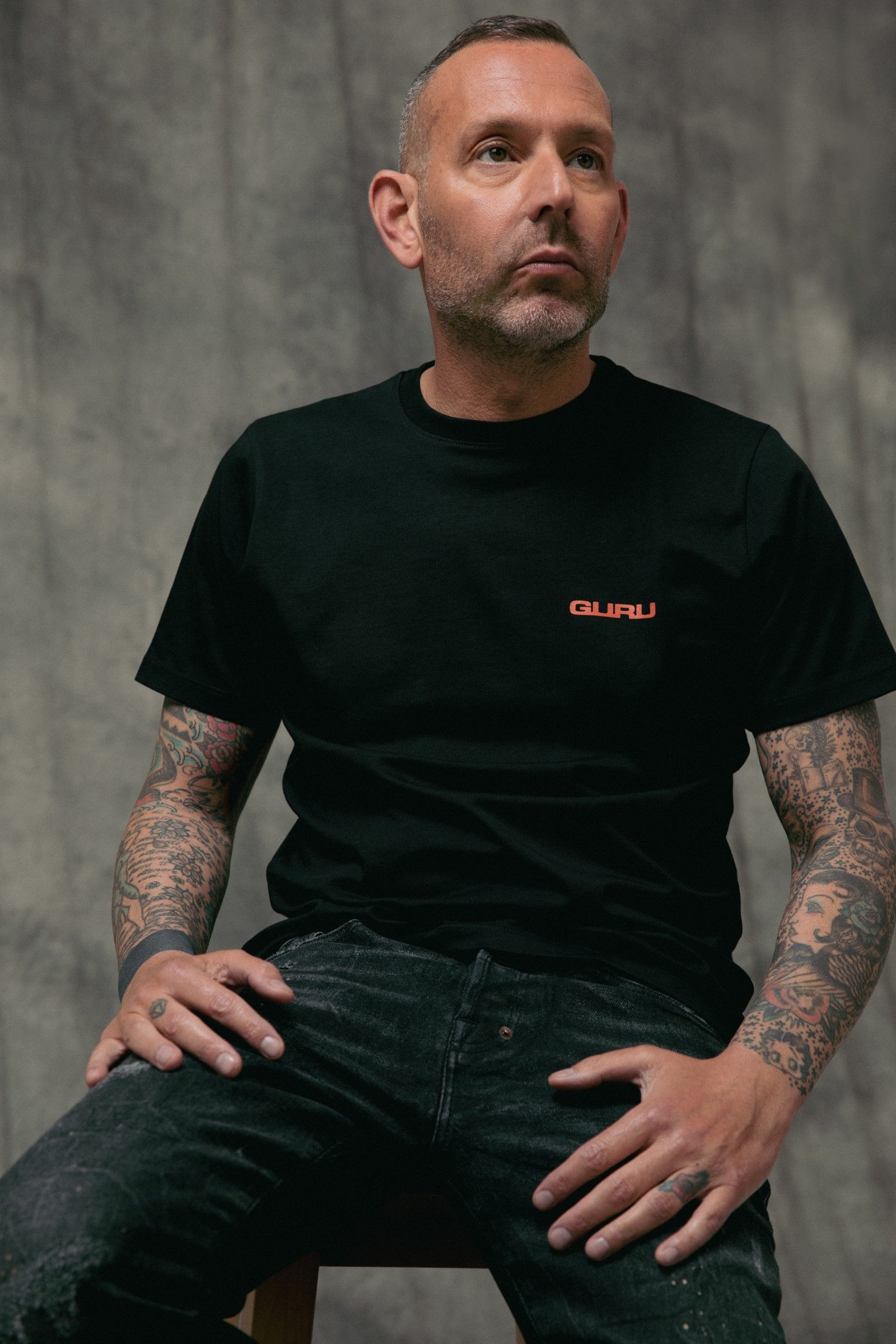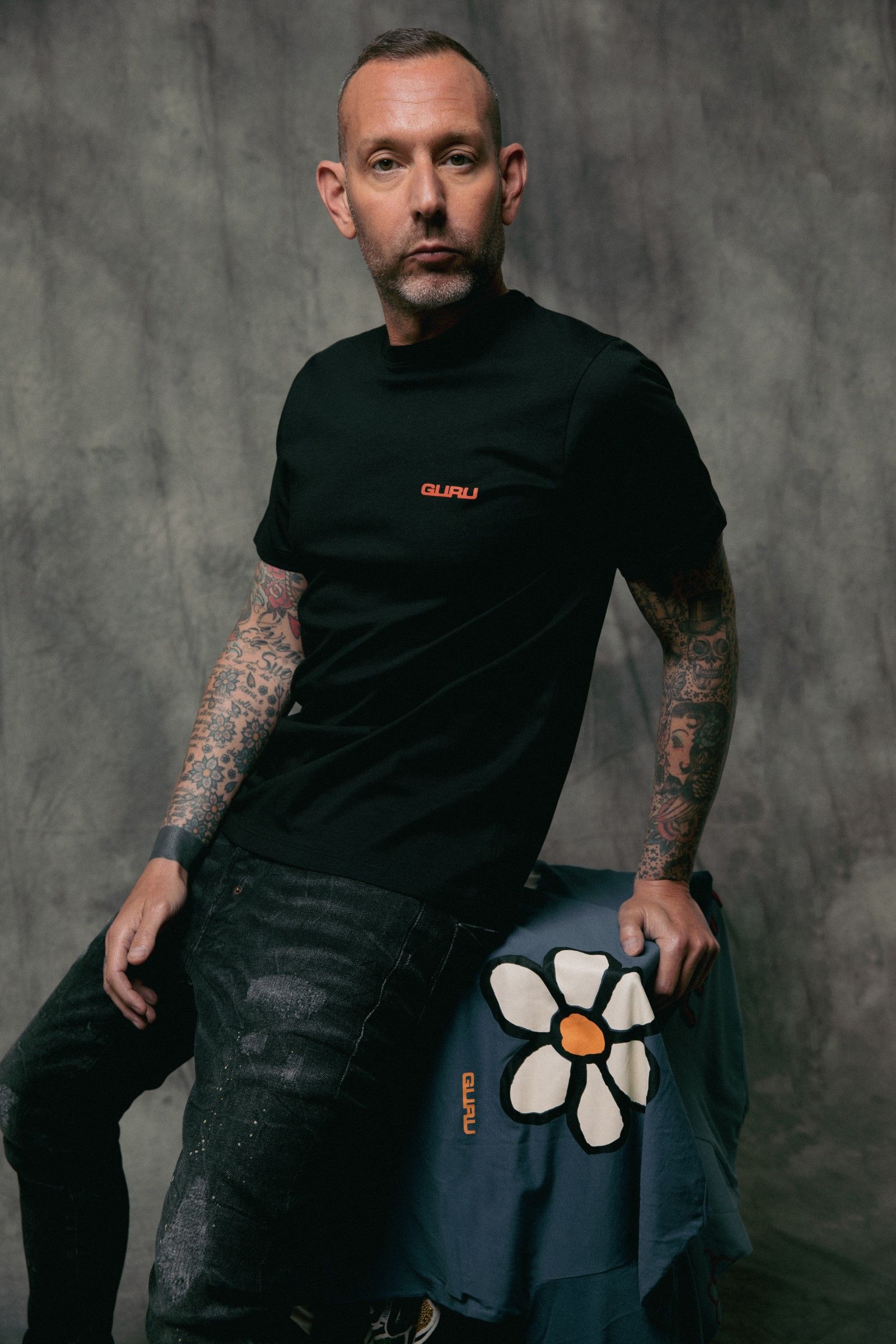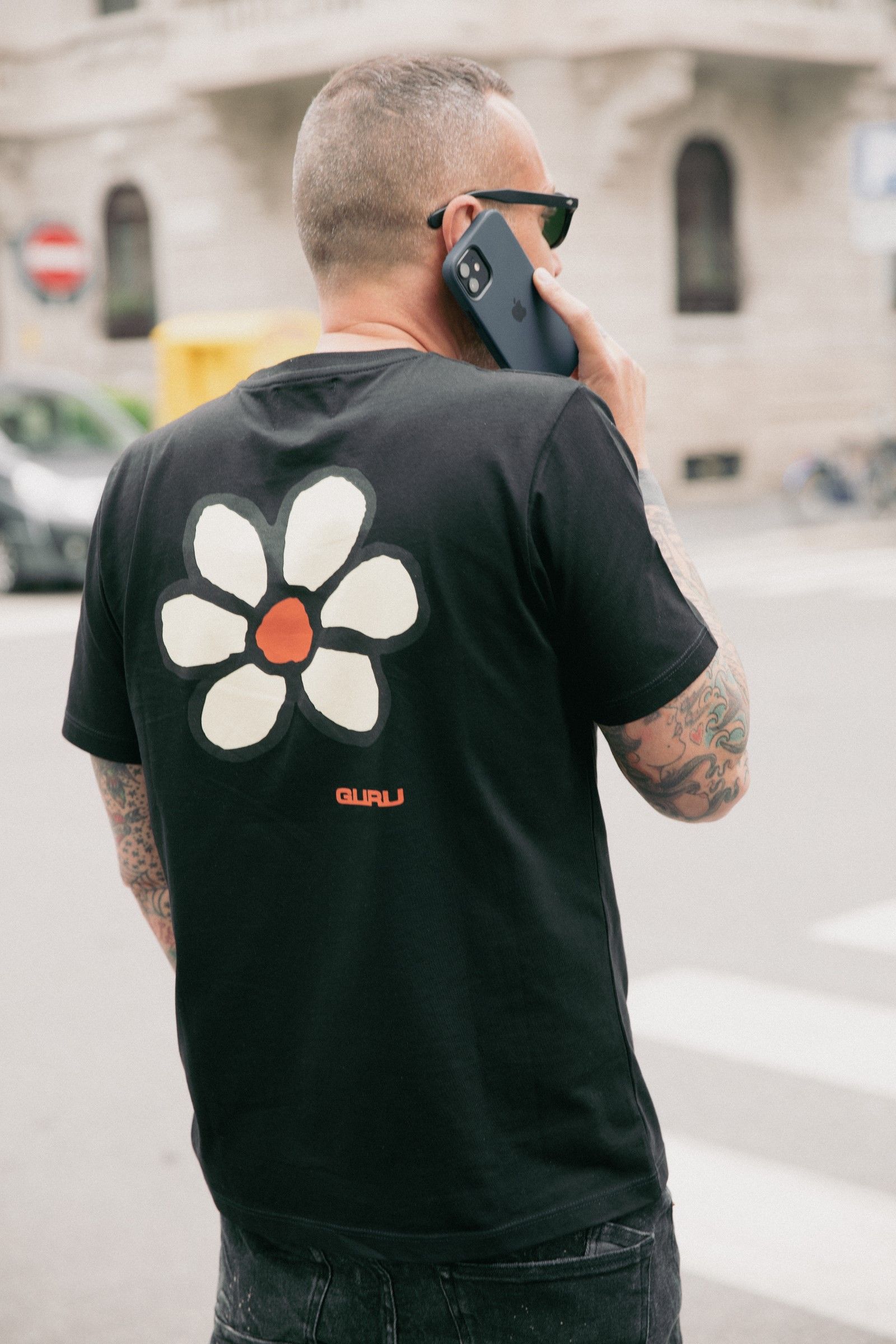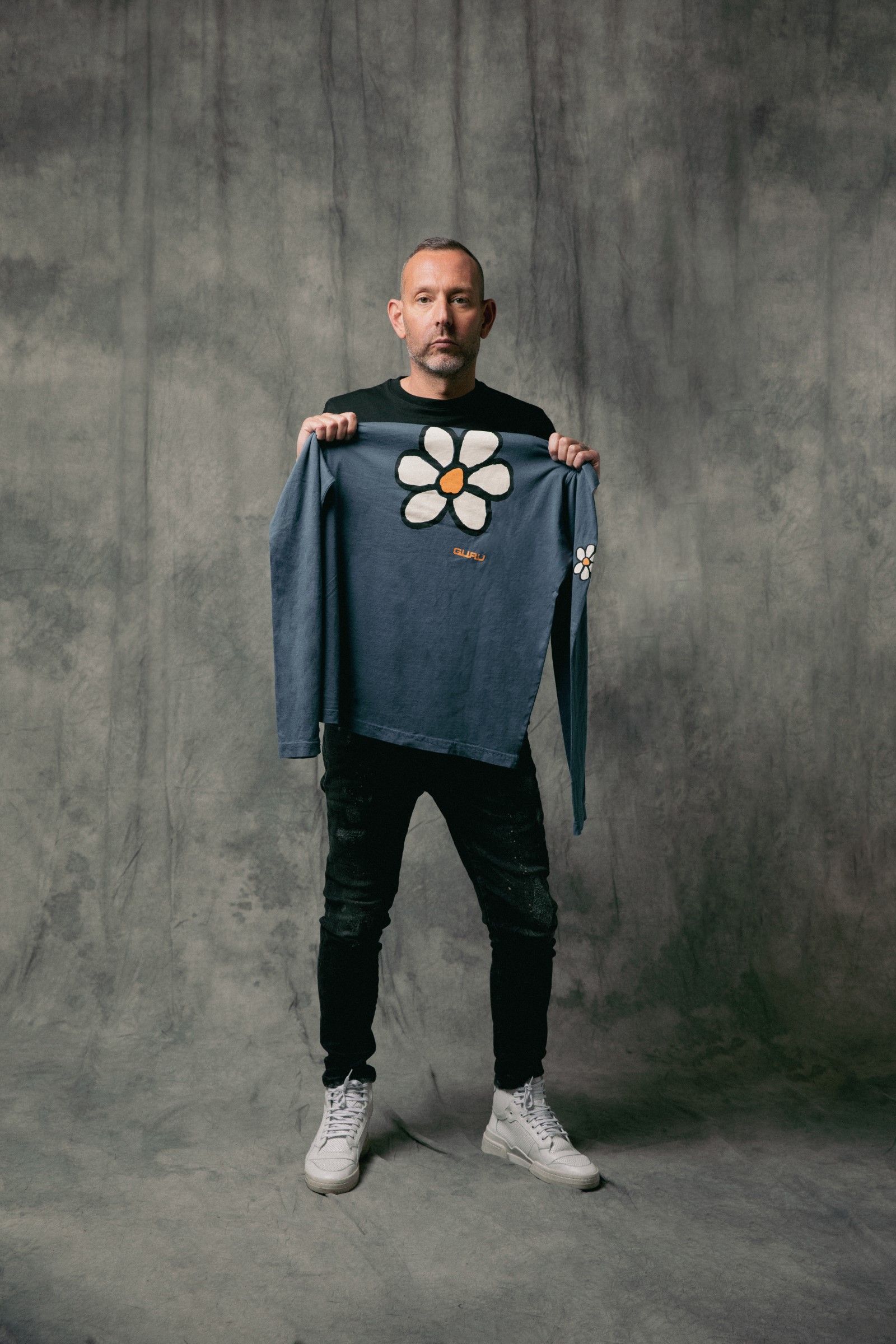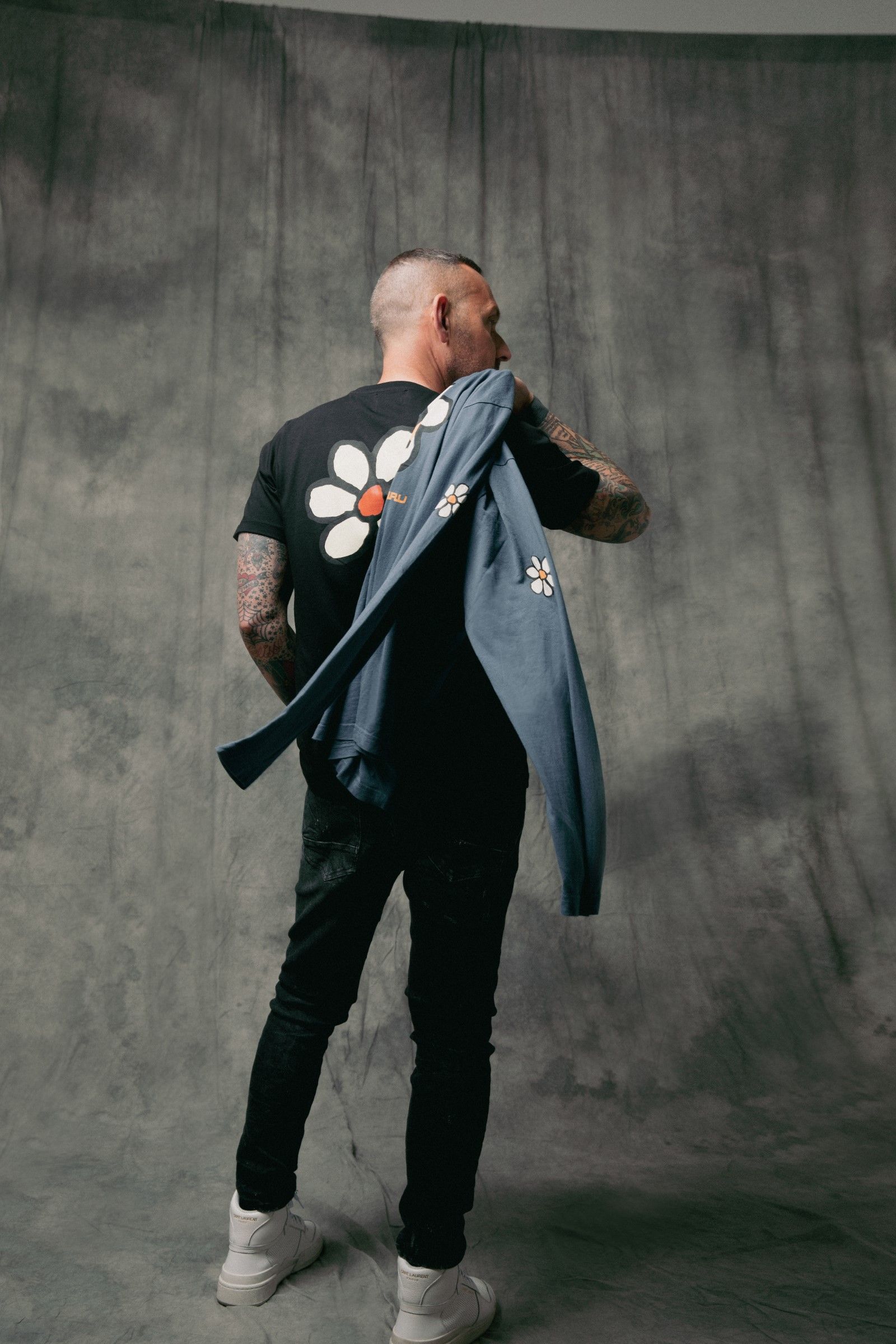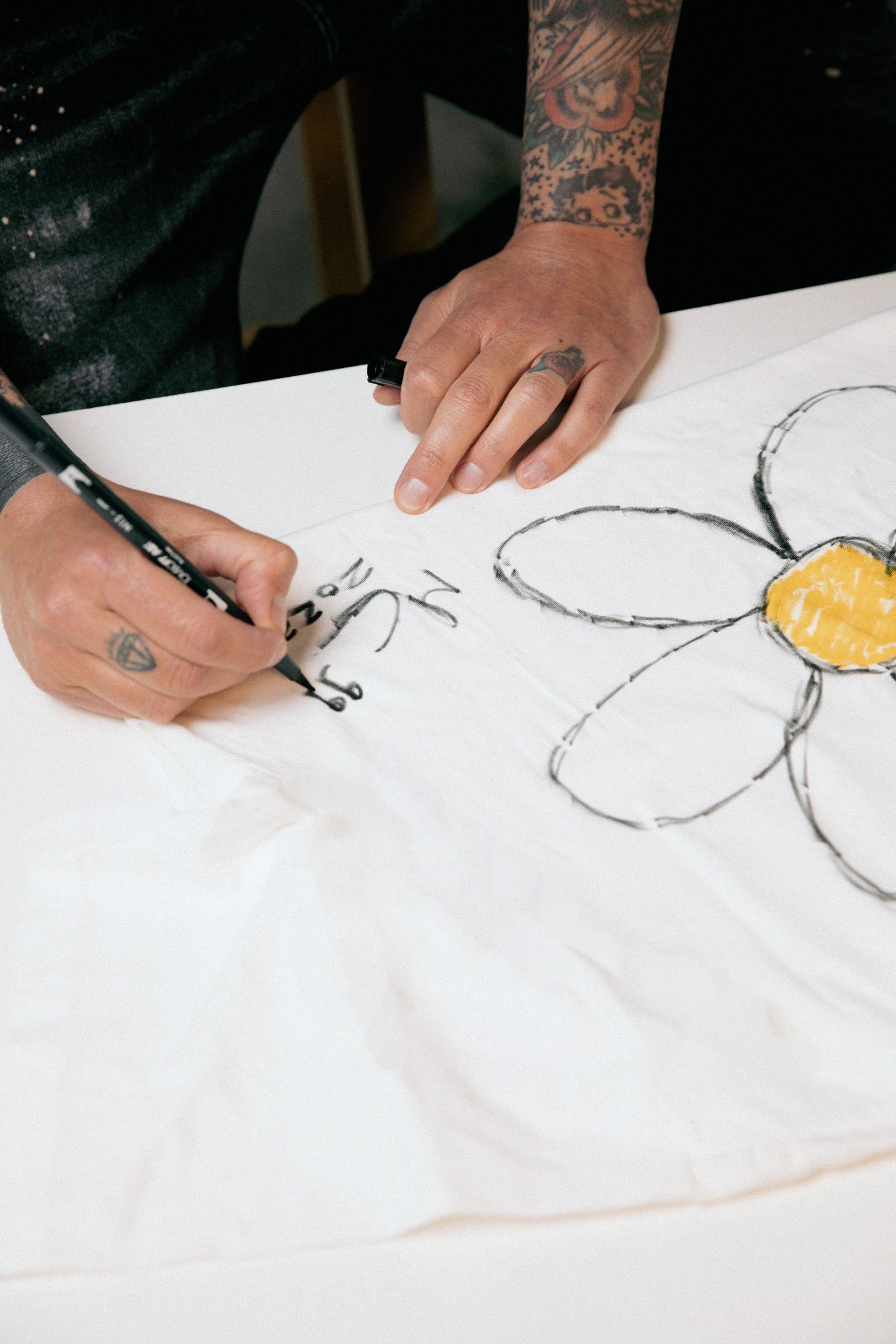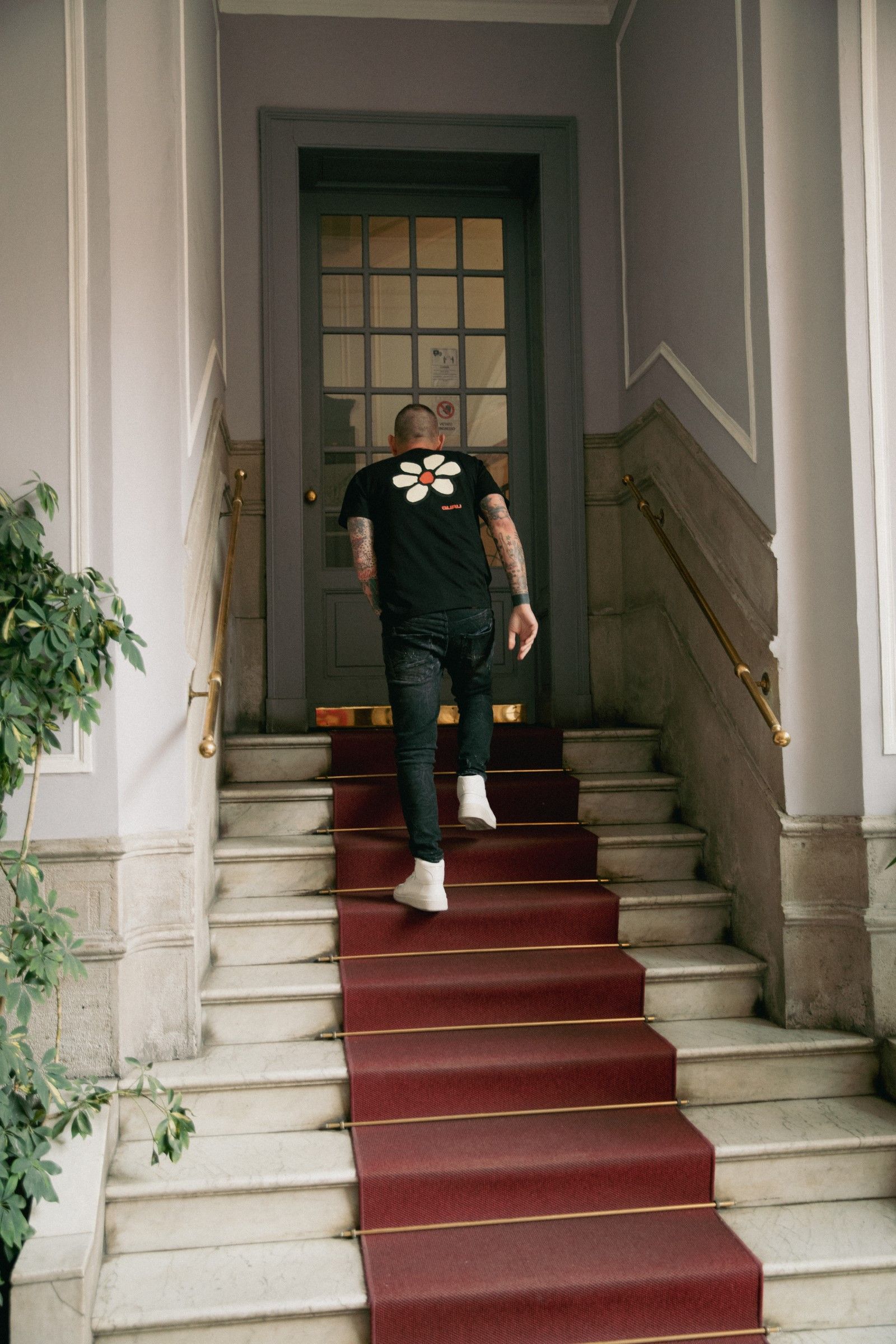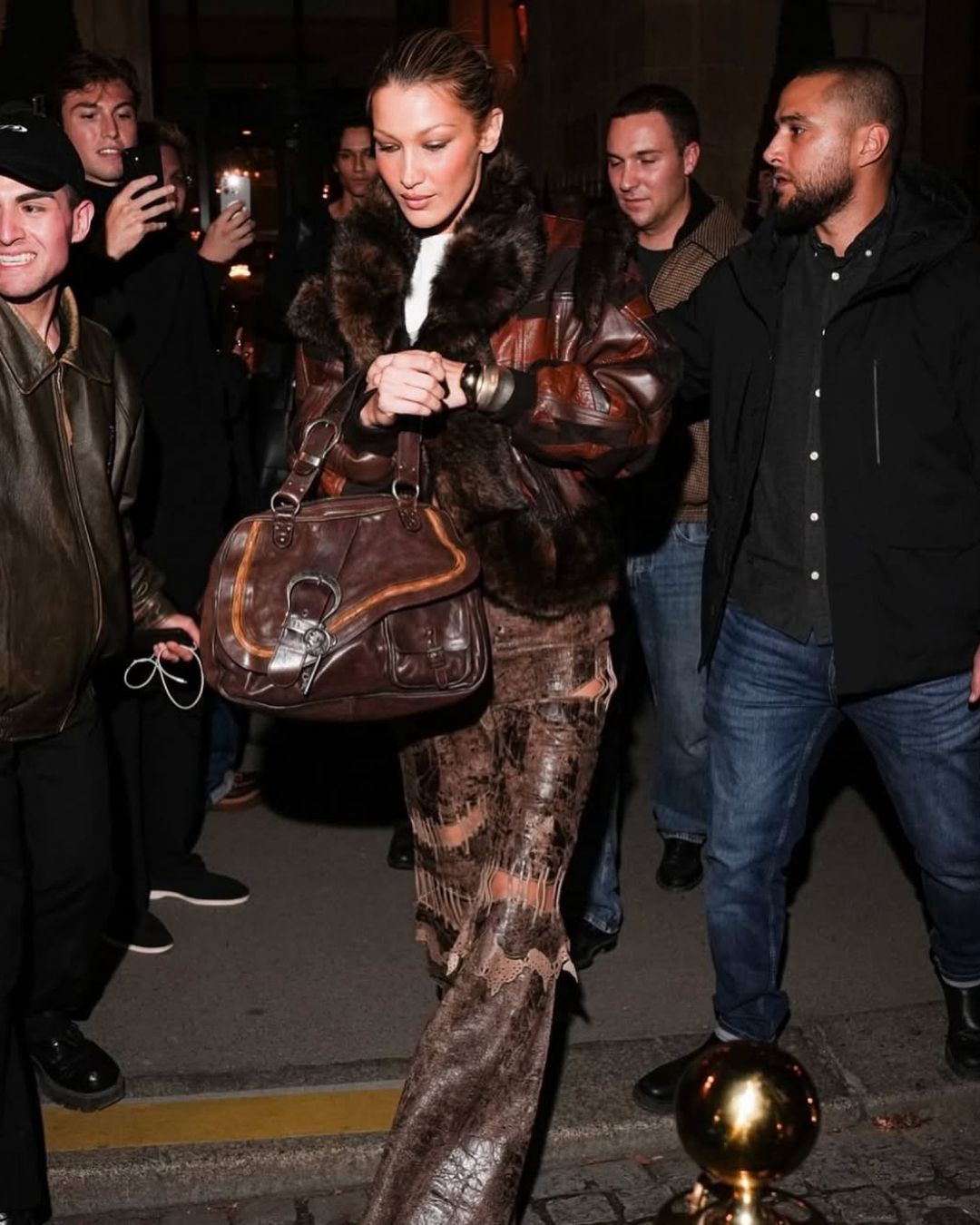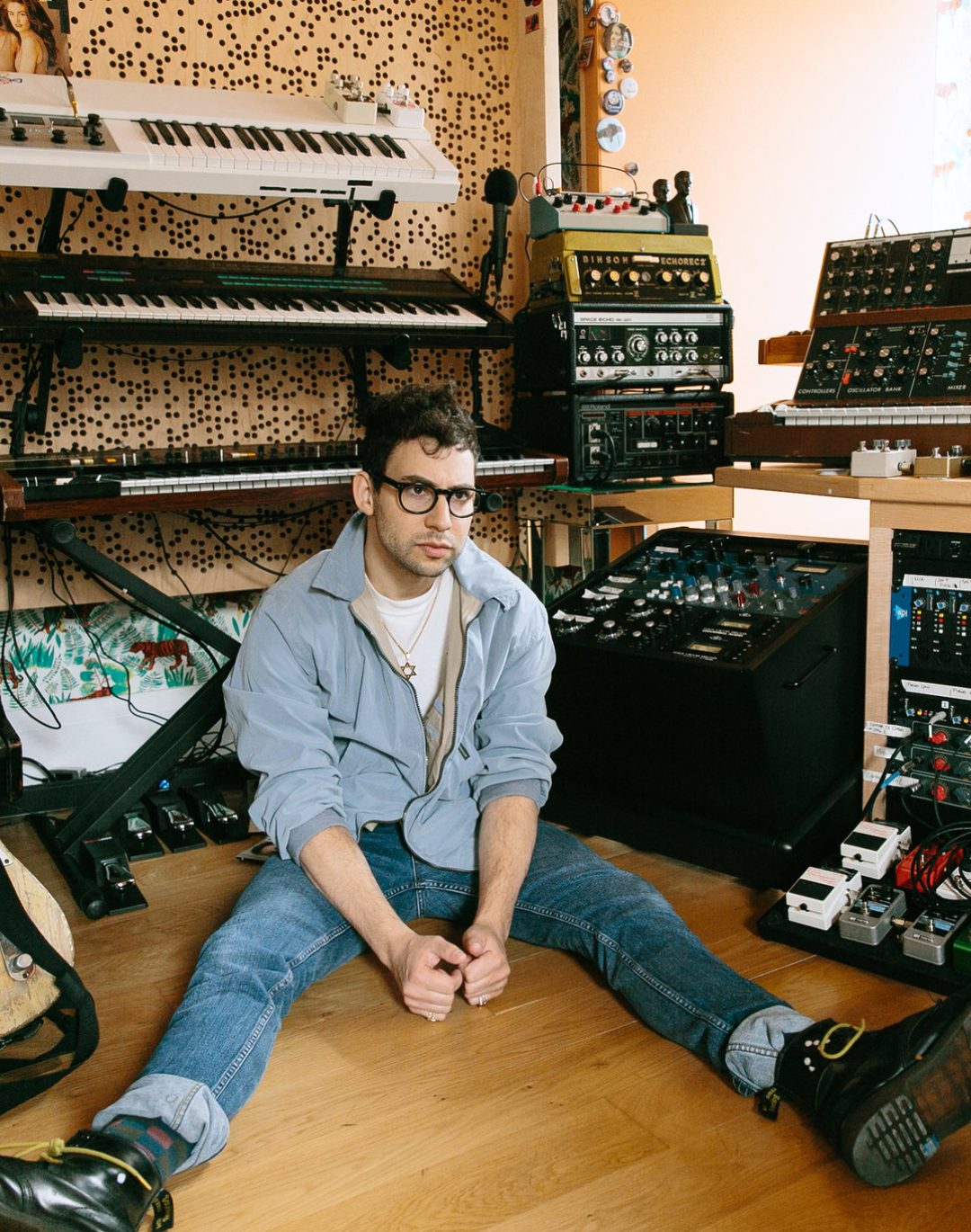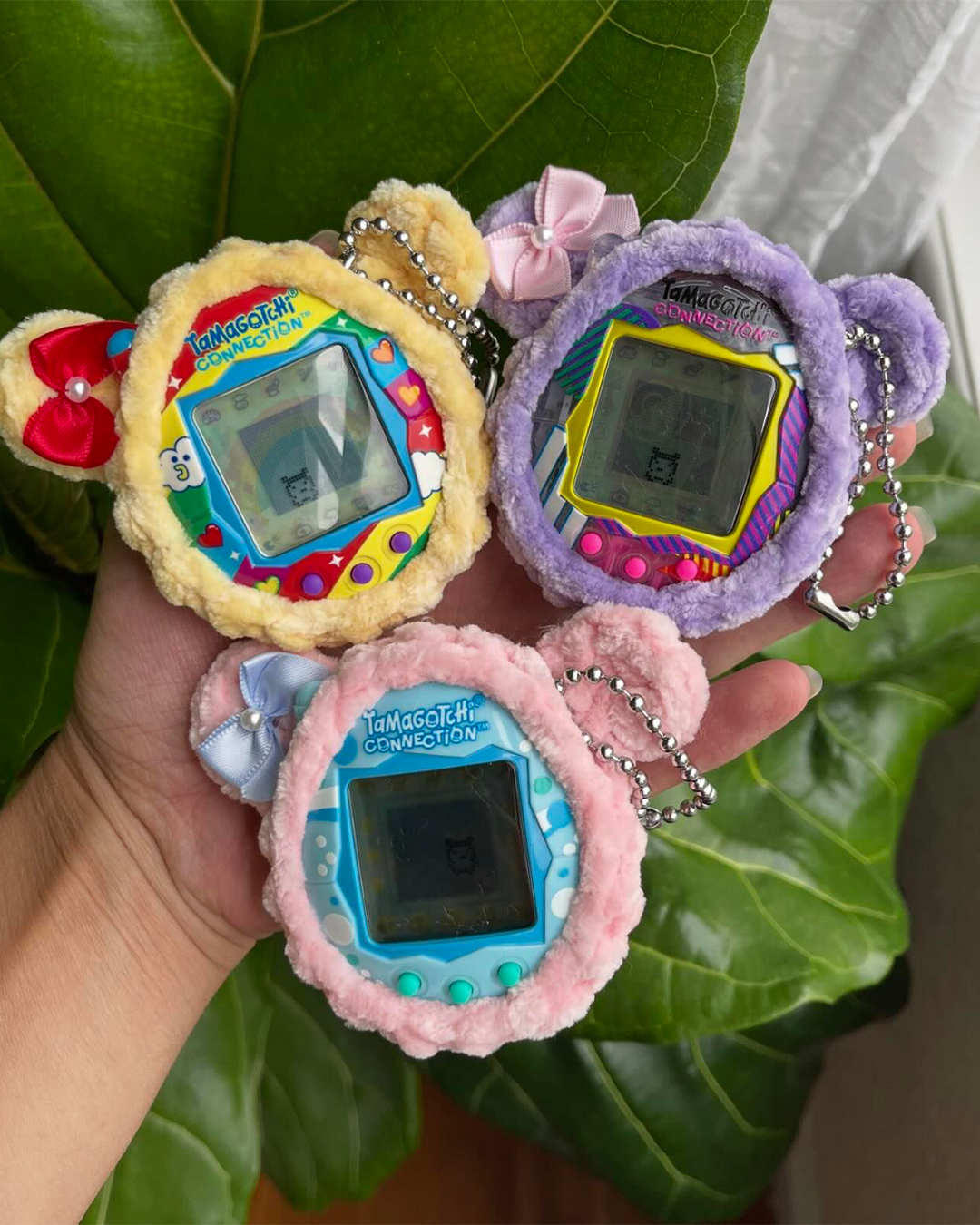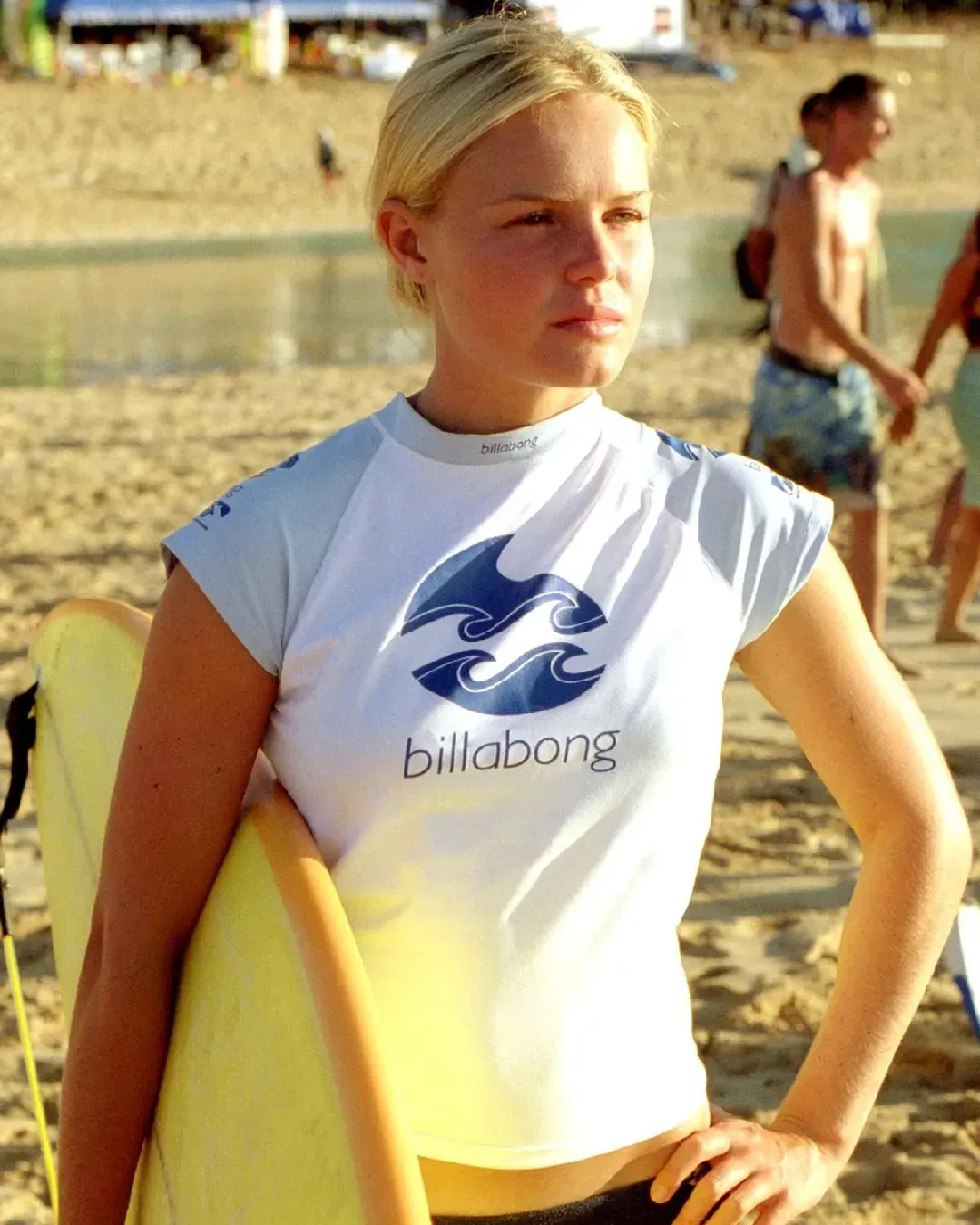
The indestructible daisy: Matteo Cambi recalls Guru and the 2000s Past, present and future of the brand as told by its founder
«My story is a cross-section of those years», says Matteo Cambi from the tall wooden stool on which he is sitting, surrounded by the special edition T-shirts he signed for the relaunch of Guru of last April, a brand he no longer owns but of which, unquestionably, he will always remain the founder. «Mine is a typical Italian story made up of a little bit of everything: made up of gossip, made up of wanting to appear, made up of wanting to participate or be someone who even through work could say something and could shout his achievements to the world». Matteo Cambi founded his brand in his twenties, he is now forty-five: in the meantime, his brand has changed hands and, on the wave of the resurgence of the Y2K aesthetic, it made its comeback under new ownership and a new look. Although some things do not change such as, for example, that iconic daisy logo. «That logo was born by chance», recalls Matteo, «this daisy was drawn, and it was contested by insiders at first. Back then the aesthetic was very surf-like, very American. We were beginning to taste the phenomenon of Abercrombie, of this imagery that was coming from the United States with the vintage, preppy looks. And so this daisy was out of place at first. But it was born that way and slowly it exploded».
Of course, one cannot talk about Guru without talking about a well-defined place and time: the Italy of the early 2000s. When asked if it was more Italy that was reflected in the brand or the brand that reflected the country, Matteo said it was «Italy did not adapt to the brand, it was the brand that found its place in an Italy that functioned like this». And when asked what Italy it was that made the brand so monumentally successful, his answer was: « It was a hopeful Italy, which still believed a little in fairy tales». To which he followed: «There was a lighter mood in the country, the desire to stand out was huge. I'm not saying everything was easier, but people had more dreams and maybe these dreams were more easily realized. Today I find that it is more difficult. The dreams are there, they are alive, but it's more complex to realize them». But Matteo is not the type of guy to wallow in nostalgia. «Nostalgia is always there and has always been there. It's a healthy nostalgia because anyway everything that reminds me of Guru, from my times up until now, for me are good memories, pleasant memories. Everything that was a little bit more difficult in Guru's path for me has been set aside. When I think of Guru I think only of good things».
Thinking about Guru's second life, with its new owners (i.e., the Monegasque company GHEP, founded and directed by Gianluca Sessarego) and its new strategy, immediately makes thoughts race to the way the brand became famous in the days of its birth, that is, spreading like wildfire in that milieu of showgirls and soccer players, showgirls and those TV personalities that dominated Italian pop culture. «The 2000s was a world dominated by television, a few personalities participating in broadcasts that were followed», Matteo remembers. «Of course, in those years, social media was not around, so print media, gossip and television could be what today are the channels we all use. I tried to ride this phenomenon as much as possible, together with music, together with sports and together with discos, clubs and DJs». Today things are very different, those social channels have multiplied that world, endlessly segmenting its audiences. Yet, in essence, things have not changed that much. According to Matteo, «everyone who is doing something good in their field has characteristics to have communication skills and to convey a message to kids and those who follow them even through what they wear».
But beyond communication there is more: there are people. It was Matteo himself who described Guru as a «tribe» and, indeed, the brand was soon associated with the Italian Truzzi subculture, particularly fond of gigantic logos, flashy colors and, above all, a lifestyle that was a singularity of those years. Matteo easily remembers those times: «The discos, the clubs, the first beaches that had music and parties were populated by people who walked and searched for this kind of life. In those years,regular party goers wore t-shirts, they were in a tanning bed two times a week, they had their own philosophy and lifestyle. And on that, being a mass phenomenon, the brand hit very hard». A world that, however, is perhaps returning in spirit. In the 2000s, as Matthew recalls, the club «was something we did as a group, you would go and share that moment with other people». A whole mood that the evolution of clubs into places that offer music, where that of the DJ-celebrity is almost a gig, has put aside for a few years. But also a mood that, after the lockdown, according to Matteo, is ready to return. In any case, Matteo is proud of that world, which has propelled him so high: «The credit I want to take, compared to Guru, is that he was the first to believe in communicating through characters, to be present in the cult places and clubs of Italy».
A heritage, then, which not only returned today with the blessing of its founder, a presence now external to the brand, but which already in past years has left an indelible mark on the country's pop culture. The interview concludes with these words: «What Guru has left behind is definitely the great notoriety and strength of this symbol and daisy chain that is indestructible and indissoluble. More than 20 years have passed now. To this day its strength remains this and above all is that everyone, or at least almost everyone, knows Guru and the dais. And that is no small thing-we are talking about a historicity that is the same as the great brands that have relaunched over the years. Everyone knows it».










































